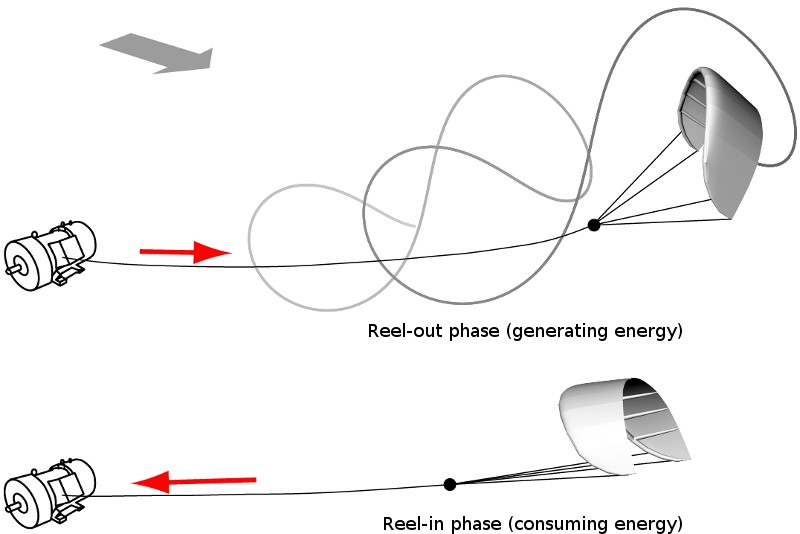Airborne Wind Energy (AWE) is an emerging technology that uses tethered wings to harvest wind energy and convert it into electrical energy. Most concepts use a kite which flies in crosswind maneuvers to generate a traction power in the tether that is converted on the ground by a generator. Kite Power 2.0 is a project based on the collaboration of TU Delft and HsKA Karlsruhe aiming to develop a system capable of providing affordable, reliable and clean electricity for utility-scale grid-connected on-shore power generation. The advantage over wind turbines is, that AWE technologies are less material intensive which makes such systems easier to deploy in remote areas, mountain areas and offshore. Also, the tether allows the AWE system to harvest wind energy at higher altitudes where the wind is not only stronger but also more persistent.
The Kitepower 2.0 system is operated in periodic pumping cycles, alternating between reel-out and reel-in of the tether. During reel-out, the kite is flying figure-eight maneuvers at high speed. This creates a high traction force that is converted into electricity by the drum driving the generator. When reaching the maximum tether length, the kite is de-powered, meaning an aerodynamically favorable position is obtained. Using the drum/generator module as a winch, the kite is now pulled back to the initial position to start the next pumping cycle. By de-powering the kite, the energy consumed during reel-in is only a fraction of the energy generated during reel-out. Thus, over a whole cycle net energy is generated. The systems operate automatically and autonomously with no human intervention necessary (except for launch and retrieval).

The Xsens measuring unit (MTi-G) is located at the leading edge of the kite. Its data is essential for the autopilot which steers the kite automatically to keep it on the desired track. The Aeronautical Kalman filtered heading value is used as an input for the control loop. Over the years, it has been proven to be a reliable solution for controlling the kite. Automatic power production using the Xsens measurement unit was successfully tested since 2012.
Are you interested our solutions? Please click on the button below to contact us.
